The year 2019 marks the official kick-off of 5G commercialization. The sky is the limit with 5G opportunities but it may be challenging for firms to overcome the high barrier and tap into the worldwide market with the complexity in product R&D from design to testing.
Different regions or segments may impose different electromagnetic standards and frequency specifications, which manufacturers have to take into consideration throughout their product development cycle from concept, design to commercialization.
Other than 5G communication, radio frequency (RF) technologies are growingly present in people's daily life as their applications expand into consumer electronics, automotive systems, and even healthcare and medical devices. Accordingly, there are rigorous standards to be followed with respect to the safety, reliability, performance and power consumption of RF products. Manufacturers need specific know-how to be able to develop compliant products. They cannot just come up with a product and put it on the market.
Collaborations across industry, academia, government and research
To help manufacturers overcome the challenges, Auden Group has been offering guidelines for design platforms and test flows that manufacturers can follow. It also provides design consultation services to small and medium firms that are unable to foster in-house RF teams to help with their product development needs.
In an endeavor to shed light on where the industry is headed, Auden Group organized the Workshop on Next Generation Smart Life, Bio-EM, and Advanced Communications Technology with IEEE EMC-Society Taipei Chapter. Going into its fourth year, the international symposium has been aimed to engage participants from the industry, academia, government and research for discussions on a number of topical tracks. Speakers invited to give talks at the symposium have included representatives from the government as well as professionals from the industry. This year's event was hosted by Tzong-Lin Wu, Associate Dean, College of Electrical Engineering and Computer Science, National Taiwan University, joined by experts from IBM and USFDA to broaden the attendees' horizons.
In the morning keynote speech following Auden chairman's opening talk, Li-Fung Chang, Chief Architect, Department of Industrial Technology (DoIT), Ministry of Economic Affairs (MOEA), highlighted the critical role Taiwan will play in the global 5G scene and elucidated the Taiwan government's recent efforts at lawmaking, driving industry collaborations and advancing research and development in preparation for the 5G era.
According to Chang, in line with the Taiwan industry's characteristics, Taiwan's 5G ecosystem will most likely develop in the form of vertical applications. With government regulations easing to allow infrastructure, frequency and network sharing, 5G services can be provided by operators other than the existing telecom carriers, enabling small-cap companies to operate application-specific 5G services, rather than having the 5G market dominated by large-scale carriers.
Ruey-Beei Wu, Chairman, Taiwan Electromagnetic Industry-Academia Consortium, also noted in the opening speech that RF technologies will bring a myriad of applications to reality. How to quickly grasp the trend among the range of industrial applications, enhance competitiveness at the global level, foster professional talent and ensure adequate supply of human resources will be the key to success.
Moreover, different industries need people with different skills and they also need cross-industry talent that can plan strategies or lead technological development from a macro perspective. This is a goal to strive for through education policymaking or industry-academia collaborations.
Challenges for mmWave radar design
Dr. Xiaoxiong Gu from IBM's Thomas J. Watson Research Center gave an insight into the challenges that developers of millimeter wave (mmWave) radars have to address. mmWave radars are widely used in autonomous driving. In fact, 5G RF technologies are related to mmWave technologies with quite a few common issues to overcome. Gu highlighted some pending problems to be resolved, such as signal loss during transmission, signal loss when establishing connection, technological barriers and overwhelming testing costs.
Gu proposed using phased arrays as a solution to signal loss during transmission. That is, using a set of antennas formed in an array to increase signal strength in a specific direction while decreasing signal strength in other directions. This can effectively reduce interference and enhance signal quality.
To address signal loss when establishing connection, Gu suggested embedding antennas in integrated circuits. By shortening the transmission path, interferences to signal flow is kept to a minimum. Of course, manufacturers still have to deal with industry ecosystem issues when designing mmWave products as certain technologies are owned by a few companies, putting up a high barrier for latecomers. IC, antenna and digital signal processor (DSP) firms can work in alliance to tackle a common issue as they will hardly benefit from any synergistic effect if approaching mmWave product development alone.
Gu also offered a number of solutions to circumventing issues regarding test environment and costly test equipment, in addition to opinions on mmWave application scenarios and antenna designs.
Amid growingly rigorous electromagnetic standards for medical devices, Taiwan and US firms join forces to capture opportunities
Dr. Wolfgang Kainz from the US Food and Drug Administration (USFDA) made a rare appearance at the symposium and gave an in-depth explanation on the safety designs of medical devices used in healthcare environments with respect to electromagnetic radiation and the evaluation mechanisms.
This topic may not seem directly related to 5G communication. However, all kinds of sensitive and high-risk devices operate in medical institutions. The lack of thorough mechanisms to ensure signal transmissions are compliant with regulations and prevent them from interfering with one another during operation will not only affect healthcare quality but can threaten the life of patients. Taiwan is well-known in the world for providing premium-quality healthcare and therefore should pay attention to medical device standards especially with the leaping advances in this sector.
Kainz also emphasized that electromagnetic devices are among the main equipment for medical diagnosis. How to prevent interference between electromagnetic devices and implanted devices such as cardiac pacemakers from putting patients at risk will require technological implementations and protection mechanisms at multiple levels. He noted that USFDA is working with a number of research institutions in Taiwan to come up with solutions to such problems.
Health concerns over mmWave radiation
Dr. Mark Douglas from Schmid & Partner Engineering AG gave an enlightening presentation on the implications of mmWave wireless communication with rising popularity as well as mmWave test and measurement technologies.
By harnessing extremely high frequency spectrum, mmWave communication enables large capacity data transfer and thus will become the core for next generation wireless communication, including not only 5G but also the latest Wi-Fi. IEEE C95.1 and the International Commission on Non-Ionizing Radiation and Protection (ICNIRP) guidelines are two standards that specify the signal power density limits for exposure of human body to mmWave radiation.
The Federal Communications Commission (FCC) also provides guidelines on testing and measuring after conducting simulations and testing under worst-case scenarios. In an endeavor to find potential health risks of mmWave radiation, FCC designed a test flow, which includes all beam forming tests with a range of antenna elements and beam signal strength measurements under full-load operation.
Instead of a uniform transmission mode, mmWave signals can be transmitted in the forms of a single-antenna system or multiple-input and multiple-output (MIMO) antenna array, thus requiring tests and measurements over different ranges and in different scenarios.
The tests and measurements will have to be conducted over different surfaces as well. Furthermore, test reproducibility and traceability must be guaranteed so that uncertainties are kept to a minimum. Thorough testing and measuring mechanisms will help manufacturers design mmWave products that are compliant with international standards and free of risks to human health or surrounding devices so that they can go to market globally.
Cross-industry efforts are needed to capture 5G opportunities and beyond
Dong Yang Hsu, Director, MOEA's 5G Office followed with an informative introduction on the evolution of wireless communication technologies and products from 1G to 5G. When mobile phones transitioned from 1G to 2G, the revolutionary change was the upgrade from analog signals to digital signals. With mobile communication going into 3G, data services were added. 4G networks are all IP-based with voice services also sent in data packets, significantly improving voice quality.
The fundamental concept to 5G is the use of high frequency spectrum and virtualization of transmission and bandwidth management to support extremely large data capacity, ultra-low latency and over one million simultaneous connections.
Accordingly, 5G is not just much faster for live streaming video that needs high bandwidth but enables the buildup of IoT ecosystems connecting a massive number of edge devices. Aside from edge device manufacturers, IC design firms should also gear up to capture 5G opportunities. The 5G market is the perfect stage for Taiwan-based firms that have long excelled in high-tech product development and manufacturing.
From the perspectives of 5G application and hardware, Hsu indicated virtualized cloud-native mobile networks will be the trend for 5G application while white-box 5G base station platforms will be the way to go for 5G hardware. Cloud-native mobile networks allow 5G communication to disaggregate not by operators but by the types of services and applications. The disaggregation of 5G and sharing of frequency bands and networks will bring more flexibility to 5G service providers and enrich their service offerings.
With white-box base station and open interface becoming the trend, 5G hardware will mature toward standardization with open-source software growingly adopted as well.
High-density deployment of 5G base stations combining mmWave and MIMO technologies is expected to spur massive demand for RF components, fueling their growth momentum. To satisfy the requirements of high frequency, low noise, high power, dielectric strength and energy efficiency by 5G communication, the demand for next-generation semiconductor materials such as GaAs or GaN will also take off.
Coupled with AI and machine vision, 5G communication can also be used in industrial automation to boost manufacturing efficiency. To autonomous driving that is at the center of public attention over recent years, 5G is the key enabler of smart city infrastructure buildup and autonomous driving cloud platform planning. Cars driving in cities can more efficiently and automatically communicate with traffic control cores to select the best route without human interference. Smart city implementations can automatically divert traffic flow to mitigate congestions on busy roads. The 5G Automotive Association (5GAA), founded by Audi, BMW, Ericsson, Huawei, Nokia, Intel, and Qualcomm, is committed to helping define communication standards for mobility and transportation services.
With the use of a wide frequency range and the massive number of potential applications, 5G communication imposes unprecedented challenges to information security. As 5G allows multiple ways to connect to the network and more wide-ranging vertical applications, an enormous number of smart devices can be built on top of 5G infrastructure, including smart factory, autonomous driving, healthcare, smart IoT and others. Without a way to guarantee information security, 5G may bring more nightmares than conveniences.
Partnering with the industry to create new business opportunities, academics infuse innovative thinking into technology development
Professor Tzyy-Sheng Horng, Department of Electrical Engineering, National Sun Yat-Sen University, gave an eye-opening demonstration on how existing RF technologies can be used to track activities of living creatures. He not only provided an insight into the technologies but also disclosed the massive business potentials the technologies can unleash.
Horng showed two technological developments – gesture detection and the use of an RF device using injection locking as a physiological radar for humans.
Horng used a 2D camera from a smart device combined with an injection-locked-oscillator based Doppler radar of Wi-Fi signals to achieve gesture detection. The theory is to make use of a pixel-based computer vision algorithm with Doppler-Shift Detection. Horng designed a coordinate calibration algorithm for 3D hand gesture trajectory, wherein pixel-based 2D coordinates are converted to coordinates in a real space to thereby track information about the lateral hand movement. Then, Doppler-Shift Detection of Wi-Fi signals is used to obtain information about the vertical hand movement by calculating the Doppler shift of reflective Wi-Fi signals resulted from the hand movement. The 3D trajectory of the hand gesture in the real space can then be constructed by combining the information about the lateral and vertical hand movement.
To convert the hand gesture to graphic representation, at first, Horng used motion tracking technologies, wherein the hand's center of gravity was found by identifying the difference between the movement and the background model. However, he encountered some issues and needed to modify the algorithm so he ended up selecting an HSL-based block identification algorithm. For the radar, a monostatic passive radar system was used to first perform detection of 1-D and two-hand gestures, followed by the 3-D gesture trajectory detection through software implementations and computer vision processing. Both non-real-time and real-time gesture tracking techniques have been developed, achieving a hybrid gesture sensing radar system.
Among gesture detection technologies, hybrid gesture sensing radar systems have more development potentials than main stream technologies today because they are less resource-hungry and more energy-efficient. As they become miniaturized, they can be integrated into smartphones to enable AR or VR interactive experiences with no need for extra cameras or high-frequency signal generators.
The other important development is a new type of data collection device combining radar and Wi-Fi to detect people's heartrate, breathing and movement for smart city and smart building applications.
As the gesture detection technique mentioned above, the device also uses Doppler sensors to demodulate Wi-Fi signals that are transmitted and reflected. It can detect minor vibrations in a non-contact approach, for example checking the subtle up-and-down movement of the chest and the pulse on the skin, to thereby monitor physiological signs.
If the device is incorporated in an office Wi-Fi access point (AP), it can keep track of employee's health conditions as well as the number of employees entering and exiting the premise and automatically adjust the air conditioning accordingly for smarter energy use. Lowering signal interference and raising sensitivity is the biggest challenge to overcome, which calls for new use of physics know-how.
Horng's wireless radar makes use of the physics effect – injection locking. As an oscillator can change its frequency in harmony with people's movement, by using a Doppler sensor to demodulate the changes in oscillator frequencies, information about the subject being detected can be obtained.
Horng played video clips of the radar technology in action, detecting a subject's physiological signs when the subject is in the same room and in another room. He demonstrated the technology works without glitch even through concrete walls.
Afternoon sessions of the symposium included 16 brilliant presentations of forward-looking views and analyses themed on three topical tracks.
Auden Group hosted the event with the aim to bring the industry refreshing perspectives and thinking on RF designs, regulations and future 5G applications. The panel of speakers from the government, industry and academia shed light on the direction for policymaking and technology development. More than that, they enlightened attendees with tremendous possibilities of applications. Representatives from Auden Group noted in the post-event interview that the company has geared up to help the industry upgrade equipment and technology and tap into a broader market.

Opening VIP photo of the event

Yue-Pin Chang, chairman, Auden
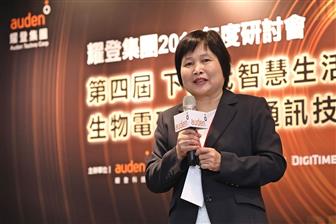
Li-Fung Chang, chief architect, 5G Technology Program Office
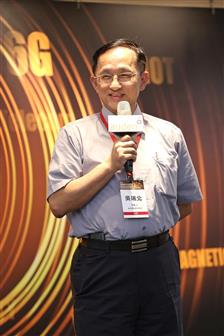
Ruey-Beei Wu, Chairman, Taiwan Electromagnetic Industry-Academia Consortium

Tzong-Lin Wu, Associate Dean, College of Electrical Engineering and Computer Science, National Taiwan University
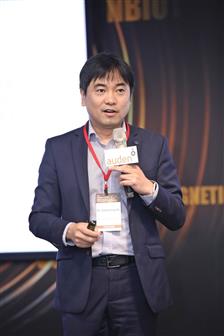
Dr. Xiaoxiong Gu from IBM's Thomas J. Watson Research Center
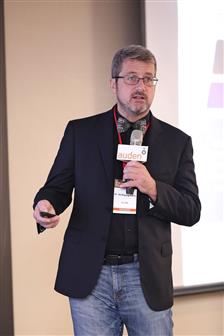
Dr. Wolfgang Kainz from the US Food and Drug Administration (USFDA)
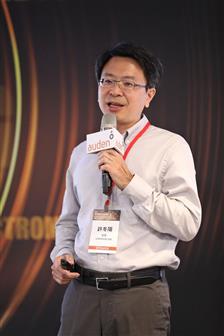
Dong Yang Hsu, Director, MOEA's 5G Office
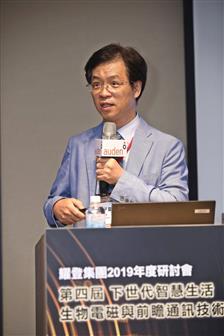
Professor Tzyy-Sheng Horng, Department of Electrical Engineering, National Sun Yat-Sen University
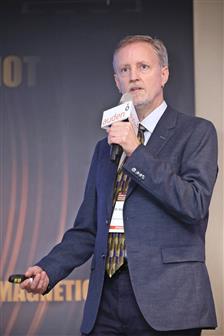
Dr. Mark Douglas from Schmid & Partner Engineering AG
DIGITIMES' editorial team was not involved in the creation or production of this content. Companies looking to contribute commercial news or press releases are welcome to contact us.

